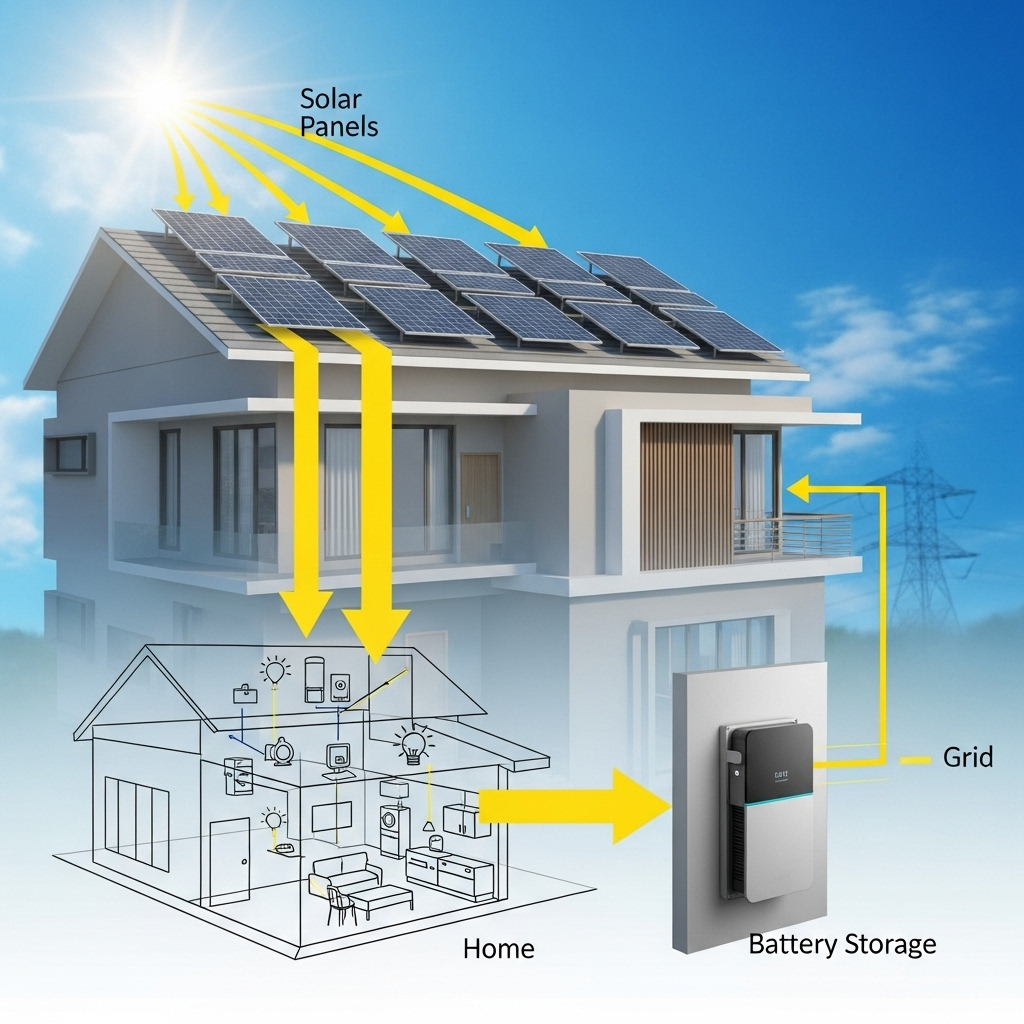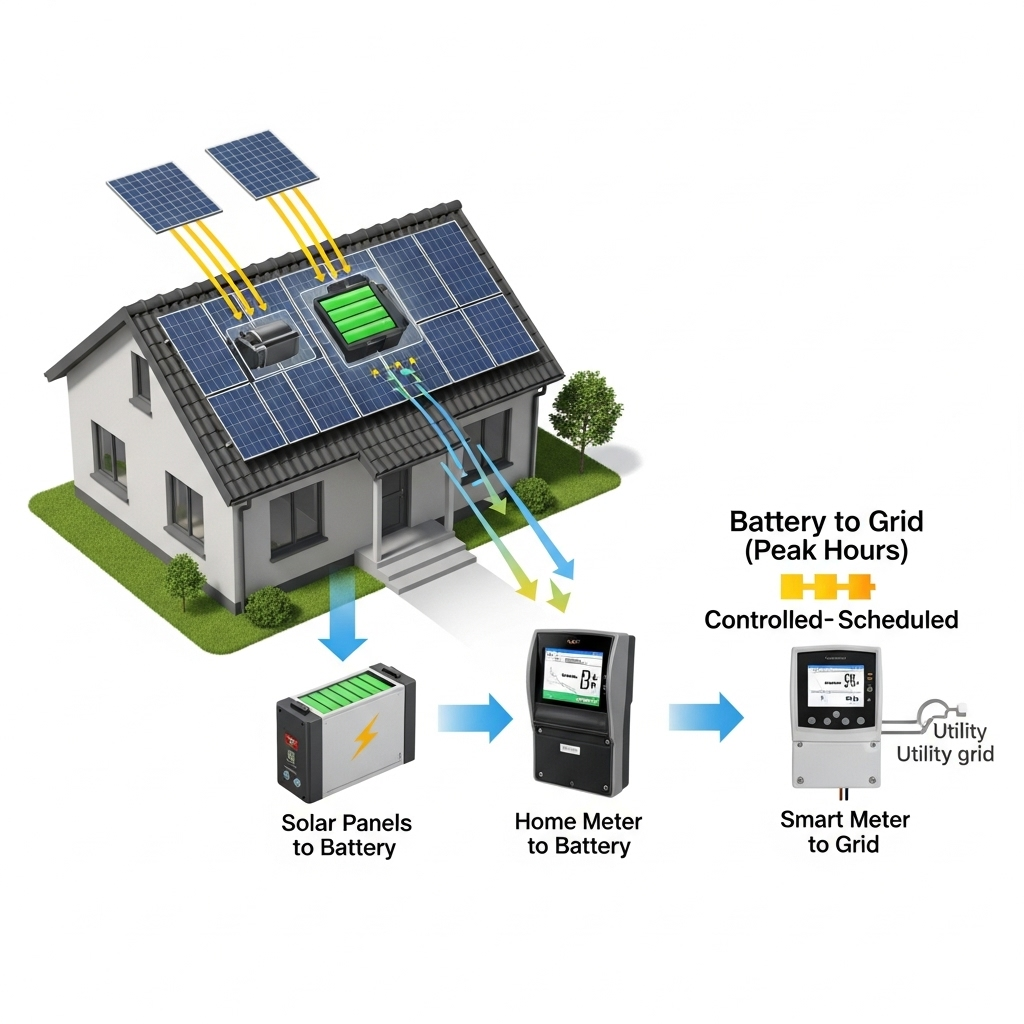Brazil's solar energy market has seen remarkable expansion. A key driver of this growth was a favorable net metering policy established by the National Electric Energy Agency (ANEEL). However, as the market matures, these policies are evolving. This analysis examines Brazil's journey from traditional net metering to a new compensation structure, offering valuable lessons for homeowners and businesses on how to adapt and thrive in a changing regulatory landscape.
The Rise of Distributed Generation in Brazil
Brazil's solar story is one of rapid adoption, largely thanks to early, supportive policies. The initial framework created a powerful incentive for consumers to invest in renewable energy, transforming the nation's energy profile.
The 2012 Net Metering Milestone
In 2012, ANEEL implemented a net metering system that kickstarted the distributed generation market. According to a report from the International Energy Agency, this policy allowed small-scale renewable generators to connect to the grid and receive credits for their surplus electricity. As noted in the Next Generation Wind and Solar Power report, generators with capacity up to 5 MW could feed excess power back to the grid. In return, they received a credit on their electricity bill, which could be carried over for several years. This 1:1 credit system made solar investments highly attractive and financially straightforward.
Explosive Growth and Market Impact
The 2012 regulation unleashed a wave of investment. A 2024 IRENA publication, Development banks and energy planning, highlights the scale of this growth. The country now has over 2.2 million distributed generation systems, totaling 25 GW of capacity. Remarkably, about 70% of all solar power in Brazil comes from these distributed systems, which are categorized as micro-generation (smaller systems, typically residential) and mini-generation (larger commercial systems). This demonstrates the profound impact of consumer-level adoption on the national energy matrix.
The Shift from Net Metering to a New Framework
As distributed solar generation reached a significant scale, discussions about the long-term sustainability of the 1:1 net metering model began. This led to a major policy evolution aimed at balancing the benefits for solar owners with the costs of maintaining the grid.
Why Policies Evolve: Grid Costs and Fairness
Traditional net metering effectively allows solar owners to use the grid as a giant battery at no cost. They export power when the sun is shining and draw it back later, with each kilowatt-hour being credited equally. However, this model does not account for the costs of grid infrastructure, transmission, and maintenance. As more users adopt solar, fewer customers are left to cover these fixed costs, leading regulators worldwide to seek more balanced solutions. Brazil's policy shift reflects this global trend toward ensuring all grid users contribute to its upkeep.
Brazil's New Law: The Transition to Net Billing
Brazil's Law 14.300, enacted in 2022, marked the official transition from traditional net metering to a form of net billing. Under the new rules, owners of new solar systems are no longer credited for the full retail value of their exported electricity. Instead, they must begin paying for a portion of the grid usage costs, specifically a tariff component known as TUSD Fio B. This change is being phased in gradually until 2028, after which new system owners will pay the full component. Existing systems are grandfathered under the old rules until 2045, preserving their initial investment terms.
| System Installation Date | Compensation for Exported Energy | Key Implication |
|---|---|---|
| Before January 2023 | 100% of retail rate (1:1 credit) until 2045 | Investment protected under old rules |
| After January 2023 | Gradual reduction in credit value (pays a growing portion of grid fees) | Lower ROI from exporting power |
| From 2029 Onwards | Pays full grid fee component on exported energy | Strong incentive for self-consumption |
Maximizing Solar Value in the New ANEEL Era
With export credits diminishing, the strategy for solar owners must change. The focus now shifts from maximizing exports to maximizing self-consumption. This approach ensures you get the most value from the energy you generate.
The Central Role of Self-Consumption
Self-consumption is the practice of using the solar power you generate directly within your home or business. When you consume your own power, you avoid purchasing expensive electricity from the utility. Under the new ANEEL rules, every kilowatt-hour you self-consume is worth the full retail electricity rate. In contrast, every kilowatt-hour you export is now worth less. Therefore, the most effective way to maximize your solar investment is to align your energy usage with your solar production or store the excess for later use.
Integrating Battery Storage: A Strategic Advantage
An energy storage system (ESS) is the most powerful tool for increasing self-consumption. A home battery stores the surplus solar energy your panels produce during the day instead of exporting it to the grid for a lower credit. You can then use this stored energy during the evening and night, or during power outages, further reducing your reliance on the utility. This strategy directly counters the financial impact of reduced export compensation and provides a stable, independent power supply.
Sizing Your System for Optimal Performance
In this new environment, designing the right system is more important than ever. It is no longer just about installing as many panels as possible. A well-designed system balances solar generation with your typical consumption patterns and includes appropriately sized battery storage. For a detailed look at how to evaluate and optimize your system, understanding key metrics is crucial. You can find a comprehensive breakdown of performance indicators in this ultimate reference on solar and storage performance. Proper sizing ensures you minimize wasted energy and maximize your financial returns.
Global Lessons from Brazil's Experience
Brazil's policy evolution is not happening in a vacuum. It is part of a worldwide movement where regulators are adapting to high levels of renewable energy penetration. The lessons learned here are relevant for solar markets everywhere.
A Common Policy Trajectory
Many mature solar markets are moving away from simple net metering. As the IEA's Technology Roadmap for Solar Photovoltaic Energy explains, alternatives like 'Value-of-Solar' (VOS) tariffs are being considered. These policies attempt to calculate the true value of exported solar power to the grid, which includes energy value, grid service benefits, and environmental value. Brazil’s move to net billing is a step in this direction, signaling a more sophisticated approach to compensating distributed energy resources.
The Future is Smart Energy Management
The key takeaway is that the future for solar owners lies in smart energy management. This involves more than just generating power; it requires actively controlling it. Modern solar solutions, combining high-efficiency panels, hybrid inverters, and lithium-based battery storage, give homeowners the tools to decide when to consume, store, or sell their energy. This not only maximizes personal savings but also contributes to a more stable and resilient electricity grid for everyone.
A New Chapter for Solar in Brazil
The changes in Brazil's ANEEL export compensation rules represent a new chapter for the country's solar industry. While the era of 1:1 net metering for new installations is over, the value of solar energy remains undeniable. The transition to net billing makes a clear case for pairing solar panels with battery storage. This combination empowers consumers to achieve greater energy independence, secure their power supply, and maximize the financial benefits of their investment in a clean energy future.
Disclaimer: This article is for informational purposes only. It does not constitute financial or legal advice. Please consult with a qualified professional before making any investment decisions.
Frequently Asked Questions
What was the original ANEEL net metering rule in Brazil?
The original rule, established in 2012, allowed owners of small-scale renewable energy systems to export surplus electricity to the grid. In return, they received a 1:1 credit on their utility bill for every kilowatt-hour exported. These credits could be used to offset future consumption and were valid for several years.
What is the main change under Brazil's new solar energy law (Law 14.300)?
The main change is the shift from net metering to a net billing system for new installations. Under this system, exported energy is no longer credited at the full retail rate. New system owners must now pay a gradually increasing portion of the grid distribution fee (TUSD Fio B) on the energy they export, reducing the financial return from sending power to the grid.
How does an energy storage system help under the new net billing rules?
An energy storage system, or battery, helps by allowing you to store excess solar power generated during the day. Instead of exporting it to the grid for a reduced credit, you can use this stored energy at night or during peak hours. This maximizes self-consumption, which is now the most financially beneficial way to use your solar power.
Are existing solar systems in Brazil affected by the new rules?
No, systems installed before the new law took effect in January 2023 are protected by a grandfather clause. These systems will continue to benefit from the original 1:1 net metering rules until the year 2045, preserving the terms of their initial investment.





Leave a comment
All comments are moderated before being published.
This site is protected by hCaptcha and the hCaptcha Privacy Policy and Terms of Service apply.